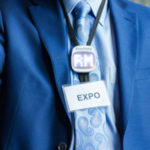Tip #1: More is not always better
The first step in making a sleep-friendly meeting is to take a close look at the traditional chock-full program, according to Antonia Koedijk, New York-based director of business development for the Netherlands Board of Tourism and Conventions. “I understand the philosophy of jam-packing,” she said, “but I think we need to focus on quality versus quantity.” Marie-Louise Doyle, director of event solutions for Pragmatic Events in Ottawa, suggests practicing some role reversal. “Put yourself in the attendees’ shoes and think about when you go to a conference,” she said. “Are you scrambling for time? Are you stressing out because you were out late, up early, and haven’t called home or answered your work emails? Or are you sitting in a session and actually answering emails? You have to give delegates the opportunity to get 100 percent out of the sessions they’re attending.”
You won’t need to do a lot of research to find out if your attendees are feeling stretched thin. “Look around and see how many people are nodding off in your afternoon sessions,” Terry Cralle, a Fairfax, Virginia-based Certified Clinical Sleep Educator, said. “When we fall asleep, it’s unmasking the sleepiness in all of us. In a boring meeting, we should be bored, not asleep. If people are falling asleep, they’re not getting the sleep they need, and they’re not getting the most that they can out of the meeting.”
One way to make the day a little shorter (and less draining) is to replace some educational sessions with learning centers in the exhibit hall. “Instead of having 40 concurrent sessions over two-and-a-half days, have 30, but arrange for learning or techno pods on the show floor,” Doyle said. “People can sit down and listen, or if they’re not learning anything, they can float to another pod. Maybe the proposals or abstracts that were good but not great don’t deserve a full session, and you can put 10 of them in these learning pods.”
Tip #2: Skip the early-bird sessions
Although early starts (whether it’s a plenary session or a breakfast keynote) have become the norm at most meetings, it might be time to put them to bed. Quan doesn’t attend any early-morning sessions on principle. “I refuse to attend or give a sunrise session,” he said. “I just don’t do it. I think it’s ridiculous.”
Instead of having a 7:30 a.m. networking breakfast, Doyle suggests, start at nine and let people have some leisure time in the morning. Attendees will appreciate being able to sleep in, work out, or grab coffee with their fellow attendees. “People don’t have to be stuck in their hotel rooms,” Doyle said. “You can provide networking opportunities by putting in yoga classes or organized early-morning runs. The pace is more reasonable, and attendees will appreciate it.”
In fact, Doyle has started reducing early-morning sessions at the meetings she works on, and hasn’t heard a single complaint. “We’re not seeing any negative feedback,” she said. “What we’re hearing is ‘A bunch of us met for breakfast’ and ‘It’s nice to have some downtime.’”
The International Sleep Products Association (ISPA), the Alexandria, Virginia–based trade association for mattress manufacturers and bedding-machinery and -service suppliers, made a similar move recently at its semi-annual ISPA Expo. After studying attendee surveys and attendance at morning sessions, ISPA decided to get rid of its earliest sessions.
“We used to offer a 7:30 a.m. educational program before the floor opened at nine, but we haven’t done it the last couple years,” said Catherine Lyons, ISPA’s senior vice president. “We were worried about pushback, but we got no complaints.”
Tip #3: Mix it up
Are you a lark (morning person) or an owl (late to bed)? Not everybody has the same sleep patterns, but with some imaginative scheduling, there are ways to accommodate all your attendees’ sleep habits. “Instead of the most important keynote speaker being at 8 a.m., maybe that’s a time for optional workshops,” Cralle said. “Most adults are at their peak around 10:30 a.m., so structure your most important sessions for then, and make the very-early and very-late sessions optional. Structure your program so nobody misses an important session just because of sleep issues.”
That’s how the National Automobile Dealers Association (NADA) does it at its Convention & Expo. “Our show is for 22,000 people. We have early risers and people who like to go out late, and we try to appease everybody,” said Melissa Wolpert, CMP, NADA’s director of convention services and operations. “That’s why our expo floor is open so long throughout the day. Our general sessions are usually in the afternoon so no one will miss it. We give options and have repeating sessions.”
You can also vary the schedule from day to day, Koedijk notes, so larks and owls each have a fair shot at making key events. “Maybe on Monday you start with a keynote, then switch it around on Tuesday and end with it,” she said. “Try to mix up the timing of networking opportunities, so the morning people don’t only see the other morning people and the night owls don’t only see the other night owls.”
Tip #4: Make time for naps
Cralle is an admitted nap lover, and she’s got science on her side. Research by NASA shows that a nap of just 26 minutes can boost performance by as much as 34 percent. “I would love to see time built in after lunch for people to grab a 20- or 30-minute nap,” Cralle said. “Of all the times and instances where napping would be incredibly helpful, it’s at these meetings. This is the environment where we need it most.”
Naps are gaining credibility in the business world. High-profile employers like Google and The Huffington Post promote workday napping, with dedicated napping rooms. Indeed, Huffington Post co-founder and editor-in-chief Arianna Huffington is a self-proclaimed “sleep evangelist” who conducted parts of her Thrive conference in New York City last year from a plush bed. At SXSW 2015, HBO promoted its “Silicon Valley” show with nap pods in its HBO Lounge. And at NADA 2015, attendees could take a break from the exhibit hall in one of four nap pods.
The pods were part of a NADA-sponsored “Lifestyle Experience” retreat on the show floor. “People loved them,” said Christine Marshall, NADA’s manager of convention operations. “They were in constant use.” It was Marshall’s idea to add the nap pods this year, and she said she’ll likely provide them at NADA 2016 as well. “Sometimes when you’re on the floor and there’s so much extraneous sound, and noise and lights, and so many places for your eye to look,” Marshall said, “you need a little place to just relax for a few minutes.”
Tip #5: Lead the charge
One way you can help attendees get more and better sleep is to bring the topic out into the open. Cralle suggests putting sleep tips in registration materials or holding a wellness session on the importance of sleep and performance. “Attendees will appreciate that you’re thinking about their health and their sleep,” she said, “even if they aren’t yet comfortable asking for more sleep during a meeting.
“A truck driver can raise his hand and say, ‘Too much,’” when sleeplessness starts interfering with job performance, Cralle said. “We’re not there yet in other industries, but we can anticipate and expect that [people are sleep-deprived and would perform better with more sleep], and if at all possible, construct our meetings around it. The things we can do to accommodate better quality sleep, let’s do it.”



